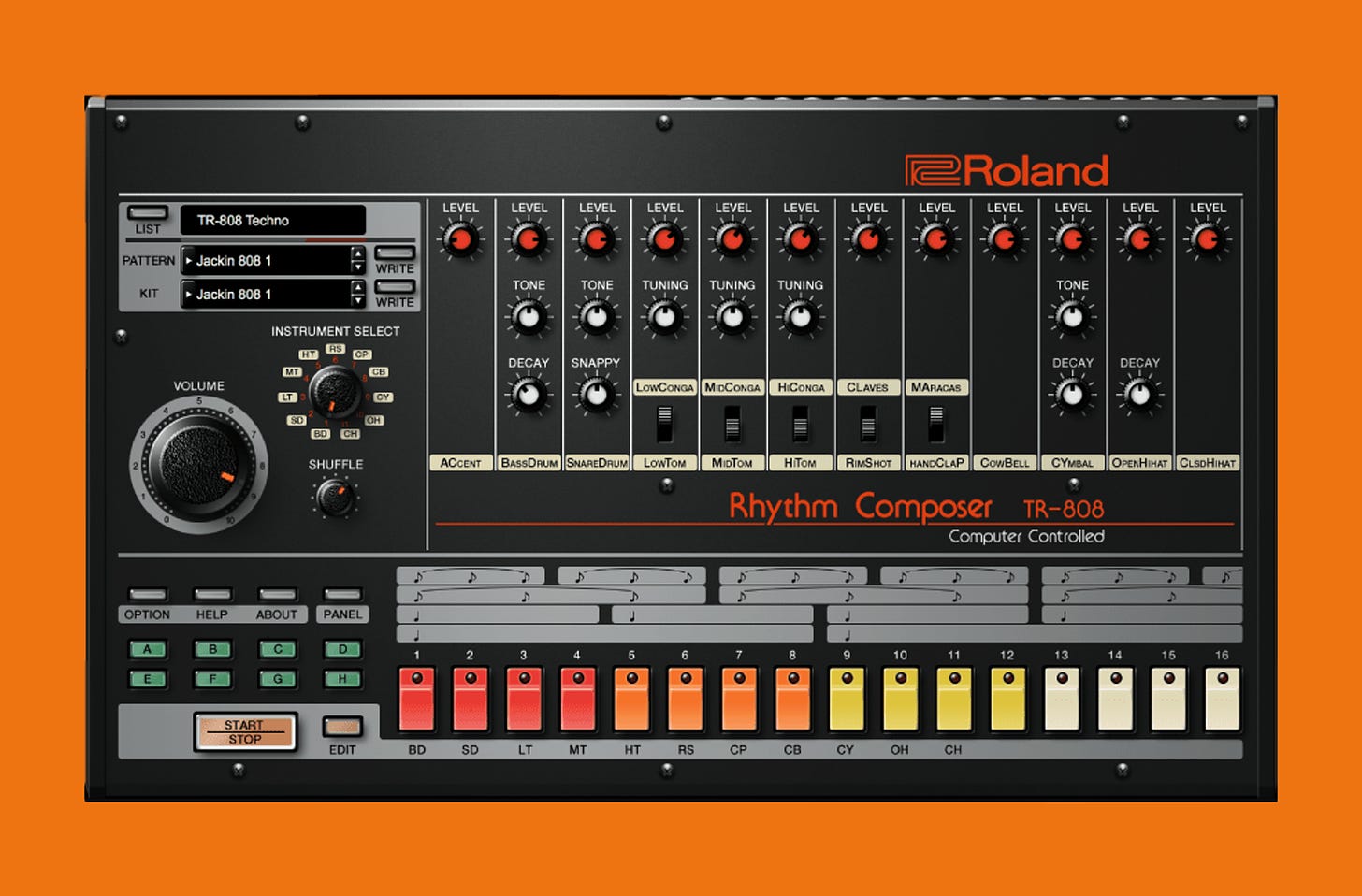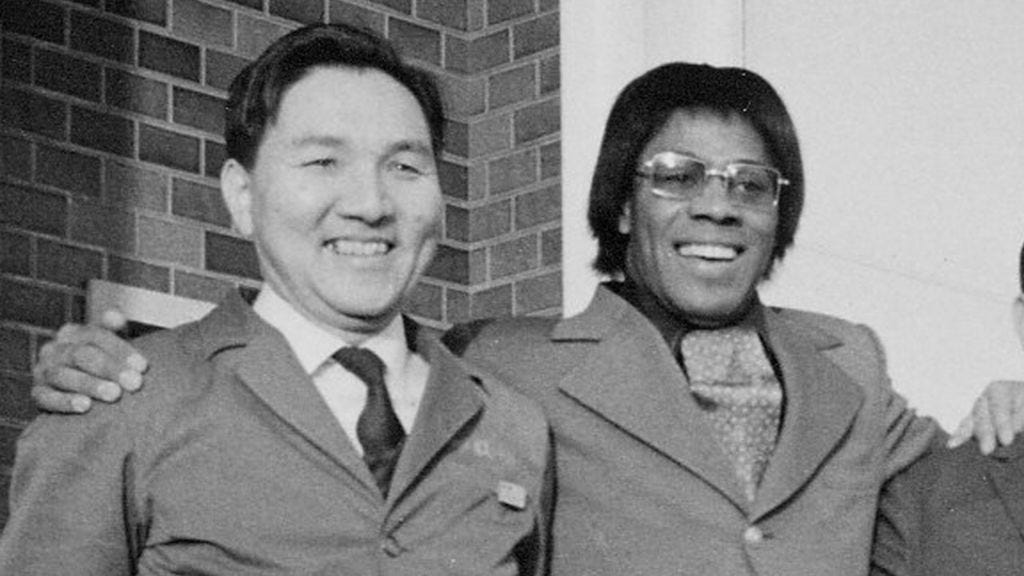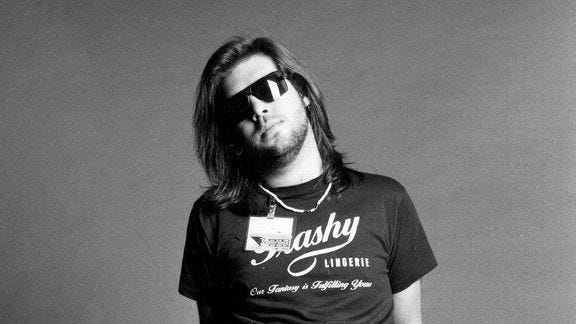Today, November 1st officially marks National Hip-hop History Month, and what better way to kick it off than to talk about the singular sound that has come to define a genre, regions, and generations of Hip-hop fans.
We’ve all heard the sound before. We look for it in beat drops, in the club, in our cars etc. And that sound is known as the…
808.
For those unfamiliar with the term, an 808 is a drum sound often used interchangeably with “Kick.” However, the 808 is more often than not responsible for the low frequency that you hear in sound systems.
808s are the foundation of many subgenres of Hip-hop, including Trap music (what kids call “Drill” these days), and its legacy in culture runs deep.
To really know Hip-hop, you gotta know the origin of the sound. More to the point, to partner with The Culture, you must understand the subtle cues that make the music important.
So, in true SNOBHOP fashion, today is a deep dive into the history of the 808 drum.
Let’s talk about it.
IT ALL STARTED IN THE LATE 60s…
Engineer Ikutaro Kakehashi set out on a mission to create an affordable machine for drum synthesis.
At the time, Ikutaro was doing this under his own company, Ace Tone, which was known for producing early rhythm machines like the R-1 Rhythm Ace, which offered preset patterns and sounds and was widely used in home organs.
By all accounts, Ikutaro was doing pretty well, but little did he know that he was about to cross paths with someone who would change his life forever…
While Ace Tone continued to create its products, he crossed paths with a man named Don Lewis, who found a way to “hack” the Ace Tone drum machine.
Don was an electrical engineer himself, and he was able to get the Ace Tone drum machines to produce sounds that even its creator Ikutaro Kakehashi didn’t believe it was capable of.
Kakehashi was so impressed by Don’s work that the two struck up a working relationship, and, in many respects, Don’s input in future products were the reason why drum machines became programmable.
After a few more years working under the Ace Tone moniker, Ikutaro eventually started The Roland Corporation where he made Don the principal designer.
In the early years of Roland, Ikutaro released the first drum machine the CR-78, but truly stumbled upon the company’s magnum opus in 1980.
That was the year Roland released:
THE TR 808.
The 808 was the first of its kind — a fully decked-out machine that came with realistic drum sounds and effects. It was also leaps and bounds ahead of the competition because it was programmable (something Don learned hacking the Ace Tone years earlier), which meant that you could make a drum beat fully inside of the machine AND save it for later.
Ironically, for as forward-thinking as the 808 was, the machine initially flopped.
Musicians (and critics) disliked the sounds, and production of the 808 ceased only 3 years later after Roland couldn’t get the part that was responsible for making it as unique as it was. Only 12,000 units were sold during this time.
But, all things work out for the greater good, and life would show that was just the beginning for the TR 808.
1982 CHANGED EVERYTHING…
After an initial underwhelming release, the 808 machine began to slowly get adopted by different musicians across the world.
Experimental groups like Yellow Magic Orchestra in Japan (widely credited with being the first group to use the TR 808 on a recording) and Kraftwerk inspired many musicians in America to experiment with drum synthesis.
A handful of records in the U.S. are usually given the credit for being the first to incorporate the 808 sound in the production, but in 1982, two records were released which changed the course of the 808 drum machine’s future forever.
1. Marvin Gaye: Sexual Healing
“As far as I know, he was the first person to program a TR-808 as its own instrument instead of trying to imitate a drum kit” - Mike Butcher, Electric Sound
Marvin Gaye had just experienced a tumultuous split from Motown, and as a result he wasn’t using their producers anymore. He moved to Belgium to recalibrate, and after locating a studio in Ostend, and an engineer in Mike Butcher, he was ready to work.
You’ll never guess what he brought with him to Belgium…
That’s right. Marvin was using an Roland 808.
His split from Motown gave way to a belief in being as independent as possible, and with the 808, Marvin didn’t have to rely on live musicians to create for him.
The result of experimentation on the 808 gave us one his most successful records: Sexual Healing.
Marvin Gaye’s use of the 808 validated it on a mainstream level and electrified the underground producers who were also gravitating toward the machine. Between this record and the one below, the 808 was gaining a foothold in the circles that mattered culturally.
2. Afrika Bambaataa: Planet Rock
Hip-hop was still in its infancy, but Afrika Bambaataa’s Planet Rock became the record that brought the 808 drum machine into pop culture.
The futuristic drum beat provided the backbone of the record, and has been sampled on a bunch of records since then.
Many artists on the East Coast, and across the world noted Planet Rock as the reason they began to search for the TR 808 in pawn shops — it was all to replicate the futuristic sound Afrika Bambaataa and The Soul Sonic Force.
Moreover, Bambaataa’s use of the 808 on Planet Rock led to the creation of sub-genres like Drum and Bass, House music, Electro and much more.
AS FOR HOW THE 808 BECOME A SOUND…
Hip-hop began to grow as a genre, and adoption of the 808 machine continued to spread amongst the underground. However, one producer is widely credited with using a technique that changed the use of the 808 machine forever. Of course, it was none other than:
Rick Rubin.
While tinkering with the machine, Rick made an amazing discovery:
If he adjusted the decay of the 808 kick drum, it morphed the clean drum into a wide bassy kick, which became a feature in a lot of his work in the 80s with artists like The Beastie Boys.
Just like that, Hip-hop producers starting putting that sound in their records to get that same “punch.”
As time progressed, more mainstream musicians incorporated the use of the 808 machine in their work, and it was clear that the star of the machine was the kick drum that was capable of rattling trunks and blowing out speakers.
By the late 80s it was official.
The lore of the 808 was born.
MIAMI BASS TOOK THE SOUND FURTHER
Going into the 90s, Hip-hop dominated the airwaves. Run D.M.C., and LL Cool J were global successes, so it was clear that Hip-hop was here to stay, and the 808 drum machine popularized by Planet Rock, LL, Public Enemy, and the Beastie Boys records were the driving force of the sound.
That rumbling bass tone from the 808 kick sound became so popular that it eventually made its way down to Miami where Miami Bass pioneers like DJ Pretty Tony created records like “Fix It In the Mix” — widely credited with being the first Miami song to feature the 808.
The bass sound was catching waves across Miami because of the DJ scene, and soon gave rise to groups like the 2 Live Crew who helped make Miami a mecca for Hip-hop in the South.
Building on the success of the 808 sound in Miami, one producer duo took the things even further:
Dynamix II.
Dynamix paired the 808 with different machines in their studio and created a method that allowed for “tuning” it.
All of sudden, the kick had new characteristics — it could go high, low, and even distort itself.1
It would prove to be game changer that transcended music across the East Coast. Peep below for reference:
As the 90s went on…
The versatility of the 808 was on full display.
Slowly, producers were moving onto drum machines that were more advanced than the Roland 808, and its original drum sounds survived on Floppy Disks, and eventually CDs years later.
Because of the way tech evolved, and how Hip-hop music traveled through the world, the 808 sound traveled eventually permeated the South which made way for Atlanta to get into Bass Music, New Orleans to get into Bounce, etc.
In New Orleans that led to the rise of record labels like Cash Money, and its main producer Mannie Fresh, who brought his own flare to the 808.
Moreover, in Atlanta we saw the rise of acts like the So So Def Bass All Stars, which eventually gave way to the rise of Crunk music.
Lil Jon, the de facto architect of Crunk music, heavily used the 808 drum in his work with Usher, The Youngbloodz, and many more. It gave the city a sonic identity that influenced the genre for decade to become because from Crunk music, we eventually got…
2000s TRAP MUSIC
Producers like DJ Toomp, Zaytoven, Shawty Redd, etc. ushered in a new sound in Hip-hop characterized by key elements found in the original TR 808 like the kick drum, hi-hat, and snare drum.
With the advancement in tech allowing producers to become more mobile they were able to take the 808 to new heights.
Through working with Gucci, T.I., and Jeezy who are often touted as the fathers of the Trap music, their sound effectively solidified the importance of the 808 for a new generation of Hip-hop fans.
Listen to the drums on this T.I. record below. The Hi-hat and Kick should sound familiar.
As the years went on we eventually saw the rise of producers Lex Luger, 808 Mafia, Metro Boomin’ and more who became the go-to producers of the 2010s.
With their ascent, the 808 took on even more characteristics that helped it keep relevance with a younger generation.
FAST FORWARD TO TODAY…
And all roads lead to the present day with Drill music.
The 808 is the focal point of the production of Drill in all of its distorted glory, and the foundation of this subgenre is rooted in the sound of Atlanta Trap in the 2010s.
EPILOGUE
The 808 is responsible for so many records that it’d be impossible to list them all here. Its influence spans genres, continents, and generations, which is why I think it’s important to give it a spotlight.
There’s no telling when the next big innovation of the 808 will happen but if the recent wave of rap shows us anything, it’s that each generation will find a way to flip it and make it their own.
It’s crazy how a random sine wave out of a 40+ year old machine can change the world, huh?
If you ever see an original Roland 808 going for the low, holla at me.
One.
Learned this from the 2015 documentary 808, which you can watch on Apple TV






John,
It's incredible.
Nice content about hip-hop and 808 history.
P.S. Sorry for my poor english.
This was informative. Great article.